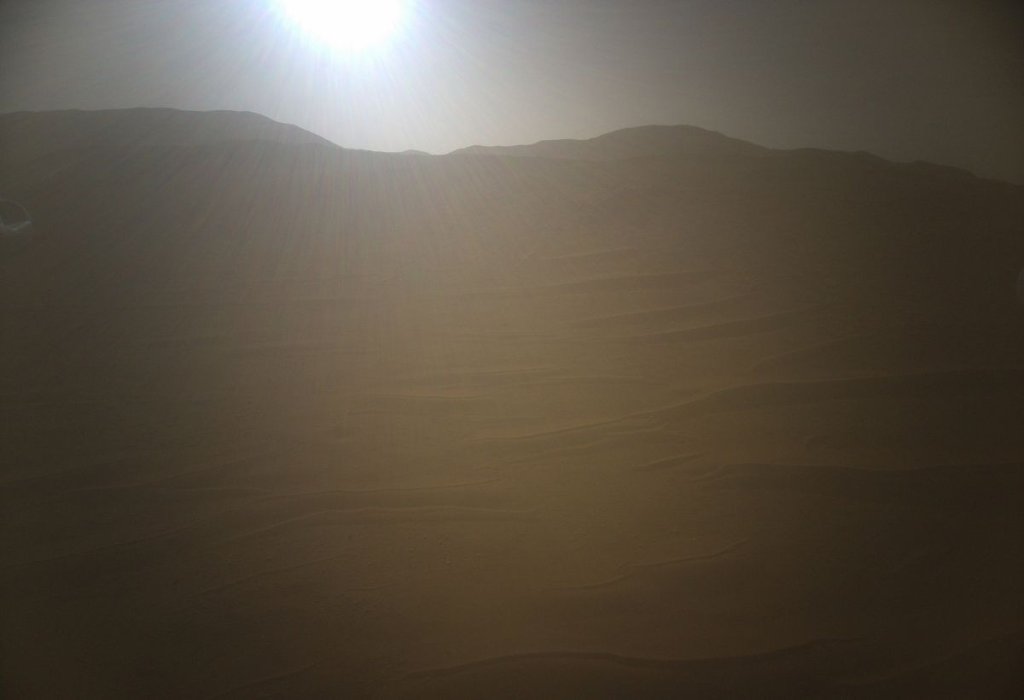NASA’s Ingenuity Mars helicopter recently took to the skies for its 45th flight, traveling nearly one-third of a mile (0.5 kilometers) — and snapping a gorgeous shot of a Red Planet sunset in the process.
Ingenuity is still making short flights around Mars’ Jezero Crater, continuing to gather data well beyond its operational life expectancy. Ingenuity arrived on the Red Planet aboard NASA’s Perseverance rover, which landed on Jezero’s floor in February 2021.
Ingenuity flew for the first time two months later, in April 2021, and was originally tasked with only a few test flights to prove its pioneering technology. However, having exceeded NASA’s expectations, Ingenuity’s mission expanded to serve as a scout for Perseverance, which is searching for signs of ancient Mars life and collecting samples for future return to Earth. Ingenuity has now flown a total of 46 times, with an accumulated distance of 6.3 miles (10.1 km).
Related: Mars rover Perseverance spots Ingenuity helicopter resting on sand dune (photo)
Flights 45 and 46 occurred just three days apart, on Feb. 22 and Feb. 25, with a 47th flight expected any day now. Depending on the relative positions of Earth and Mars, a transmission between the two planets can take anywhere from 5 to 20 minutes to reach its destination. Because of this, Ingenuity is designed to take off, fly and land on its own. Mission controllers program each flight, then must wait for data confirmation that Ingenuity has safely landed. Onboard cameras capture images used to help determine both Ingenuity and Perserverance’s next steps.
Ingenuity’s high-resolution color camera is angled 22 degrees below the horizon. Images relayed back to NASA from the 4-pound (1.8 kilograms) chopper are therefore primarily focused at the ground, searching for interesting geological features and potential obstacles ahead.
Occasionally, however, a sliver of Martian sky will make an appearance in one of Ingenuity’s photographs, serving as a reminder that the rotorcraft is giving us a whole new perspective on the Red Planet. The helicopter captured such an image on its 45th flight, but with an even rarer subject in frame — the sun.
The photo shows the sun hanging slightly above the horizon of hilltops in the distance, caught in the process of setting on Ingenuity’s 714th Martian day, or sol. The rays shining across the photograph help illuminate the rolling alien landscape of sand and rocks inside Jezero Crater, and it almost feels like a photo you could capture from a desert here on Earth. And therein lies its beauty.
These perceived similarities shape the foundation of why we explore space in the first place. That a sunset photo from a different planet can remind us so much of our own highlights the thin margin between our life-sustaining Earth and other lifeless worlds orbiting our sun and beyond. It symbolizes the very nature of Perserverance’s search for ancient Martian life, and begs the question of what sunsets on what other worlds might look like — and if humanity will get to witness those someday, too.
Follow us on Twitter @Spacedotcom (opens in new tab) or Facebook (opens in new tab).

